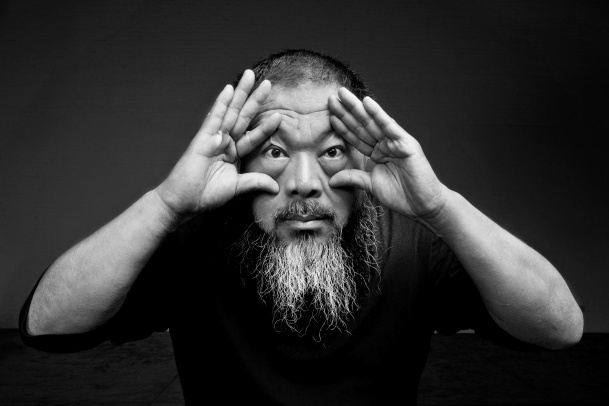Submitted by WA Contents
Ai Weiwei: "To Be Found" Sculpture Park Brodno.Chapter VI
United Kingdom Architecture News - Jul 12, 2014 - 13:23 3053 views

Ai Weiwei, 2012, photo by Gao Yuan, courtesy neugerriemschneider
July 13, 2014 (Sunday), @16:00
The "To Be Found" Ai Weiwei the Chinese artist is the sixth installment of the Sculpture Park Bródno.
Artist testing in the boundaries between what is visible and what is inaccessible to human sight and touch; between the original and the mass duplication of copy; between the act of creation and the act of destruction; between what is material and what is existing only as a myth.
Warsaw Weiwei's sculpture consists of three cylindrical holes filled with smashed pots, soil and peat.Bottoms are spaced about 100 meters, forming an isosceles triangle. Dishes buried in the ground are replicas of Chinese temple vases from the mid-fourteenth century. The resulting operating Ai Weiwei on the cycle Ghost Gu Coming Down the Mountain (2005), broken into hundreds of pieces of different size and shape. The original vases made at the time of the Mongol Yuan Dynasty (1279-1368), probably between 1330 and 1370. On the blue and white vase shows a scene with the character strategist and teacher Wang Yi (according to some sources, Wang Xu), also called Guiguzi (Master Ghost Valley ), sitting on a chariot pulled by a tiger and panther.
Reaching for the history of this precious object, Ai Weiwei was interested in the fetishization of certain objects of artistic craftsmanship, their complex fate inscribed in the logic of colonial robbery and embezzlement, while paying attention to the careless disposal of heritage of Chinese culture as a result of brutal modernization of the country. Original vase, on which were created replica Weiwei, was auctioned in 2005 at London's Christie's for a record for this type amount over 27 milionówdolarów.Immediately after the auction there were rumors that this precious and rare item was purchased by an anonymous Chinese consortium to even one vase of this type back to China. ?
Ai Weiwei's sculpture can be read in the context of art history and the tradition of twentieth-century avant-garde movements: conceptual, object found (ready-made), minimalism and land art. This project, although the material, having their volume and weight (over 300 kg), is invisible and inaccessible to the viewer. It functions as a conceptual myth, a kind of urban legend.
The formation of this work is performative dimension, reminiscent of both the rituals of burial or gesture of hiding valuables in the face of impending disaster, and the methodology of archaeological work. In Warsaw, invisible underground Weiwei's sculpture takes on additional meaning. In the city of concealing the remains of buildings destroyed during World War II or as significant traces of the past as archive Emanuel Ringelblum (who buried three milk churns documents relating to life in the Warsaw ghetto - one of them was never found), the land is often textual, is a kind of palimpsest for decoding the next generation of researchers. For Ai Weiwei Bródno project also fits in a purely archaeological context associated with early medieval settlement - it's here, a few kilometers from the park Brodnowski, discovered traces of the settlement of the eleventh century, the first in the area, which was later named Warsaw. ?
Ai Weiwei's work is also a message addressed to future generations, work "to find". We can apply here the unusual perspective of time, more geological than human. Mysterious pits filled with replicas of the fourteenth-century Chinese vases may resemble such a golden disk launched in 1977 in space aboard the Voyager. The drive that contains data about the culture on the planet was a letter that read extraterrestrial civilizations were either representatives of the human species in the distant future.Replicas of valuable vases produced by one of the greatest living artists today are not an attempt to create an archaeological "fakes". They are a story about the impossibility of imagining a world without us and the time who loses a linear character. In the distant future, Ai Weiwei's work will be one of the signs of human civilization and its most mysterious activity that is art. (Sebastian Cichocki)
For assistance in the project thank Paul Althamerowi, galleries neugerriemschneider, Berlin, Ai Weiwei Studio, Beijing.
> via artmuseum.pl
